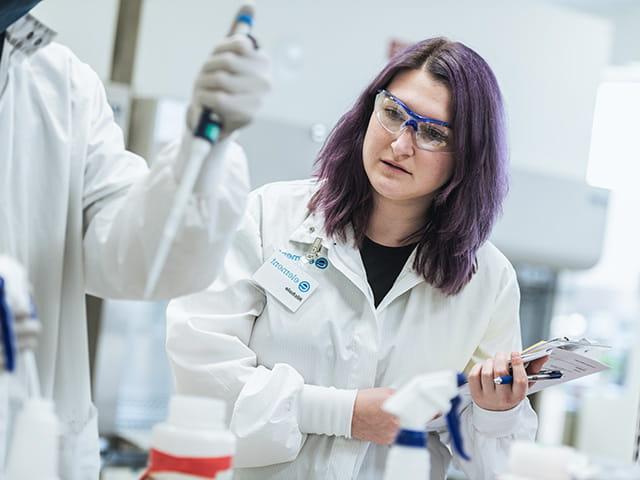With a track record of supporting the successful registration of thousands of antimicrobial products and consultative team of regulatory and scientific experts, Element has been the premier partner for product developers, manufacturers, and users of antimicrobial pesticide and biocide products for more than three decades.
Ensure your products are compliant with regulations and guidance for registration with Element’s comprehensive antimicrobial testing and analytical chemistry service offerings. Our full-service solutions have been built upon a foundation of industry-leading standards for quality, skill, and customer service. Element’s antimicrobial testing laboratory has extensive experience generating GLP-compliant analytical chemistry and antimicrobial efficacy data accepted by global authorities. With our support, thousands of clients have successfully navigated product registration with the US Environmental Protection Agency (EPA), US Food and Drug Administration (FDA), Health Canada, Australian Therapeutic Goods Administration (TGA), and European Chemicals Agency or individual European Member State agencies over the course of more than thirty years.
Element’s antimicrobial testing laboratory has been the expert partner to product developers, manufacturers and users of antimicrobial pesticide and biocide products for more than three decades. We take integrity seriously, setting industry standards for quality, skill and customer service.
Comprehensive antimicrobial testing solutions
Our antimicrobial testing solutions support a wide range of products from liquids and pre-saturated towelettes to treated surface materials. We offer an extensive library of bacterial and fungal organisms, antibiotic resistant strains, and viruses to support a broad range of efficacy tests with additional product differentiation. Along with treated articles and antimicrobial pesticide device efficacy testing, our team can develop custom test methods and protocols for your product development and registration activity.
Our complete antimicrobial testing service offerings have been designed to provide the greatest value to our customers. Generate required end use product chemistry data at the same location as the efficacy testing with Element’s analytical chemistry testing solutions for antimicrobial pesticide product registrations. We proudly continue to serve as a trusted partner to developers, manufacturers, and users of antimicrobial products, having been recognized as an industry leader for over three decades. Connect with us today to explore a partnership with Element.
Proof of efficacy against emerging pathogens
As a result of the global pandemic, proof of efficacy against specified and emerging pathogens has become particularly important. There is a critical, ongoing need to address public health needs by testing existing products for emerging pathogens quickly. Element’s team of expert microbiologists and virologists continually monitor the public health landscape, and act quickly to source and obtain emerging pathogens. As one of only a few GLP-compliant Biosafety Level 3 (BSL-3) labs in the US, Element continues to play an instrumental role in helping our clients combat public health crises. If you are interested in testing to an emerging pathogen, contact us today to start the conversation and learn more about how Element can help. We frequently test products to determine efficacy against these emerging pathogens; please note the list below is not comprehensive:
SARS-CoV-2 – Element has evaluated the effectiveness of numerous disinfectants for medical, industrial, and consumer applications on behalf of developers, manufacturers, and marketers of infection control products in support of regulated claims against the SARS-CoV-2 virus. We test to several established test methods, and custom protocols may be developed.
Mpox – Element offers efficacy testing against the current circulating strain of Mpox virus. Our initial test offerings focus on hard, non-porous disinfectant efficacy and suspension testing, including the following methods:
- ASTM E1053 - Test Method for Efficacy of Virucidal Agents Intended for Inanimate Surfaces – Modified for Formulation type – Water soluble liquids/powers, Spray Products, Pre-Saturated Towelettes.
- EN14476 - Quantitative Suspension test for the Evaluation of Virucidal Activity in the Medical area
- ASTM E1052 - Standard Practice to Assess the Activity of Microbicides against Viruses in Suspension
Please reach out today to discuss alternative methods and protocols if the cited methods do not meet your needs.
GLP vs non-GLP testing
Good Laboratory Practices (GLP) regulations establish strict requirements for aspects of both testing and facilities, similar to Good Manufacturing Practices (GMP). Our laboratories are compliant with GLP regulations, and our experienced and knowledgeable teams follow Good Laboratory Practices as outlined in 40 CFR part 160 (EPA) and 21 CFR Part 58 (FDA). Our quality system is designed to meet GLP regulations, including the handling of test substances, training of testing personnel, Quality Assurance Unit presence, test system handling, facility maintenance, documentation control, SOPs, conduct of studies and retention and maintenance of records.
When products are in the development phase, or in instances where a regulatory agency does not require GLP testing/reporting for submission, we also provide testing services under non-GLP conditions. Non-GLP testing is performed in the same manner as GLP testing. However, less documentation for testing and reporting is required, and our Quality Assurance Unit is not involved. As a result, we offer non-GLP testing services at a discount.
As a contract laboratory that provides testing for EPA submission, we are inspected routinely by the EPA and have also been audited by the FDA. We have an impeccable inspection record with both the EPA and FDA. To learn more, talk to an expert.
Antimicrobial efficacy testing services
- Microbiology Testing - Regulatory agencies require proof of efficacy against specified pathogens before approving label claims. Proof of efficacy can be demonstrated by testing the antimicrobial product against a specific bacteria, fungi or yeast using a standard test method that has been designated by the regulatory agency as an acceptable method. Element has extensive experience performing bacterial, fungal, or yeasticidal efficacy testing to meet submission requirements for regulatory bodies worldwide (US EPA, Health Canada, TGA, EN, and FDA). Our laboratories are EPA GLP and FDA GLP compliant. We have an extensive organism library as well as a resistant organism library.
- Virology Testing - Before label claims can be approved, regulatory agencies require proof of efficacy against specified pathogens. By testing the antimicrobial product against a specific virus using a standard test method that has been designated by the regulatory agency as an acceptable method, label claims can be proven. Element has extensive experience performing virucidal efficacy testing to meet submission requirements for regulatory bodies worldwide (US EPA, Health Canada, TGA, EN and FDA). Our laboratories in Eagan are EPA GLP and FDA GLP compliant. We have BSL2 and BSL3 virus laboratories in addition to a large virus library.
- Analytical Chemistry - Along with the proof of efficacy for antimicrobial products, registrants are also required to provide data proving the stability and characterization of the antimicrobial product. Our Analytical Chemistry lab provides testing services to meet EPA Series 830 Testing requirements.
- Disinfectant Efficacy Testing for the Antimicrobial Industry - Disinfectant efficacy testing formally evaluates the efficacy and suitability of antimicrobial products used to eliminate contaminant microorganisms on various surface types and components. We design and perform disinfectant efficacy studies according to GLP methods to evaluate the effectiveness of disinfectants used in your facilities and provide you with solid GLP data.
- Disinfection Qualification Testing for the Pharmaceutical Industry - Using cGMP methods, disinfection qualification formally evaluates the efficacy and suitability of antimicrobial products and procedures used to eliminate contaminant microorganisms on various surface types and components within an aseptic, sterile or otherwise controlled manufacturing environment. Element complies with USP <1072> disinfection qualification methods and will partner with you to help you develop an effective cleaning regimen for your controlled spaces.
- Biological Aerosol and Public Health Air Quality Claims Testing - Element's commercial indoor air quality testing facility is among the first - and largest - designed for real world modeling of aerosolized disinfectant and sanitation products in indoor spaces. A number of bacteria, viruses, and fungi can be tested in our large BSL-2 biocontainment lab.
- Effectiveness of Antimicrobial Preservatives - The ability of a preservative to protect a product against contamination must be supported by appropriate scientific data which demonstrates the efficacy of the preservative against the claimed microorganisms. This is accomplished by treating the test material with the microorganisms under conditions which simulate as closely as possible, in the laboratory, the actual conditions under which the test material is designed to be used. In Element's preservative efficacy testing studies, incubation times and temperatures are modified in an effort to maximize test system recovery while considering the varying recommendations between the USP and CTFA methods. The test material is exposed to a suspension of test organism and held at the specified temperature for a specified time period. The inoculated test material is assayed for surviving microorganisms at specified intervals. Appropriate sterility, culture purity, initial suspension population and neutralization confirmation controls are performed. Depending on the type of product, USP has specific criteria for bacteria, yeast and molds, when a preservative system is considered effective. Start the conversation and request a quote today for antimicrobial testing.
- Antibacterial Efficacy Testing for Soiled Dishes - These studies determine the antimicrobial efficacy of a test product intended to be used for one step cleaning and germ killing on hard, inanimate, non-porous, soiled surfaces. The test method to be used in this study will follow modifications of the ASTM approved method for the evaluation of the antimicrobial efficacy of sanitizers on inanimate, nonporous, non-food contact surfaces and the AOAC Germicidal Spray Test. A film of organism cells dried on a surface of appropriate carriers is exposed to the test substance for a specified exposure time. After exposure, the carriers are neutralized and assayed for survivors. The test material meets effectiveness requirements for claiming “kills 99.9% of germs on dishware” if there is a minimum 3 log (99.9%) reduction, relative to the numbers controls, for both carriers and the excess product runoff.
- Zone of Inhibition Assay - This assay evaluates the antimicrobial activity of an agent against a selected test organism by determining the zone of inhibition. It is designed to evaluate the antimicrobial activity of a test substance after the applied test substance diffuses through the test agar potentially inhibiting growth of the test system. Element's studies typically follow a modification of the Kirby Bauer Disc Diffusion Susceptibility Test, Clinical and Laboratory Standards Institute, (CLSI). An agar plate is inoculated with a lawn of a culture suspension and the test substance is placed in contact with the inoculated surface for test substance diffusion to occur within the test agar. Following incubation, the agar surface is examined for inhibition of test organism growth. It is important to note this study is designed to evaluate possible inhibitory properties of the test substance on a specific test organism. There is no specific minimum measured value that indicates a “passing” or “failing” result for the test or control substance.
- Cosmetic or Barrier Testing - Element's consultative antimicrobial experts have years of experience carrying out cosmetic and barrier testing. Our team can work with you to create custom protocols for your cosmetic or barrier testing.
- Wound Dressing Testing - Custom protocols can be developed to meet your specific needs for wound dressing testing. Get in touch with us today to explore your options.
Meet antimicrobial regulatory guidance requirements
In order to make label claims for a microorganism, most regulatory agencies require specific guidance be followed. We have linked some of this regulatory guidance below.
Our Services
Element is the premier contract testing lab offering comprehensive microbiology and virology testing services for the Antimicrobial industry.
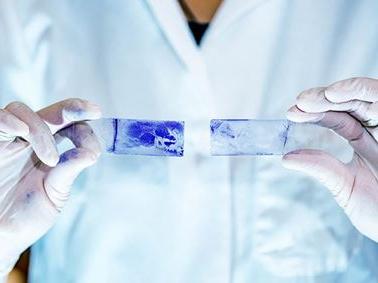
Microbiology Testing
Element offers a diverse array of microbiology testing services and can serve clients from early-stage antimicrobial product development and non-GLP screen testing all the way through GLP testing for submission.
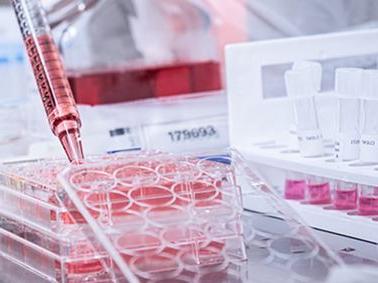
Virology Testing
Element offers GLP and cGMP virology testing options to serve our clients in the antimicrobial and pharmaceutical industries.
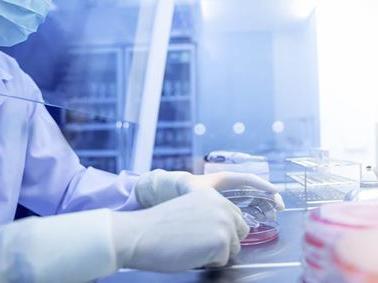
SARS-CoV-2 Disinfectant Efficacy Testing
Element is at the forefront of disinfectant efficacy testing against SARS-CoV-2 and its variants, which are the causative agents of COVID-19.
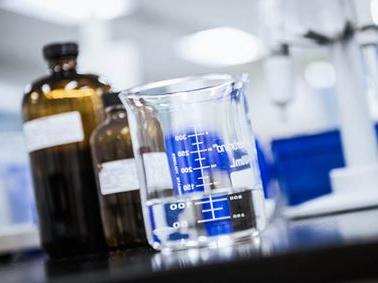
Analytical Chemistry Testing
We offer our clients full product and analytical chemistry solutions. Our GLP and cGMP chemistry offerings include chemical characterization of active ingredients, testing of product-specific impurities, physical chemistry analysis and storage stability testing.

Client Portal
Secure 24/7 access to your test result information, which you can download directly to your information management system.

Life Sciences
Find out about our testing capabilities for the Antimicrobial, Food, Medical Devices, Pharmaceutical, Biotechnology, and Personal Care industries.
